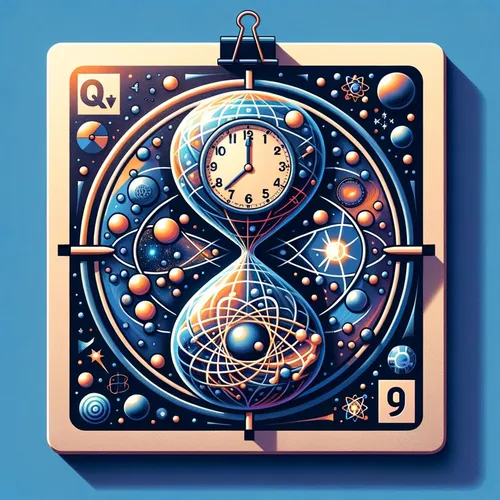QML Explorer: Your Quantum Passport to Hands-On Learning
- Author
- Quiet. Please
- Published
- Wed 03 Sep 2025
- Episode Link
- https://www.spreaker.com/episode/qml-explorer-your-quantum-passport-to-hands-on-learning--67618356
This is your Quantum Basics Weekly podcast.
Three, two, one—let’s collapse the wavefunction together. I’m Leo, your Learning Enhanced Operator, and you’re listening to Quantum Basics Weekly. Today, something remarkable entered the quantum learning landscape: the launch of the QML Explorer tutorial at IEEE Quantum Week in Albuquerque. If you’re new to quantum or just quantum-curious, this is your invitation to step inside a superposition of learning and innovation.
Imagine the hum of anticipation in a convention center alive with the brightest minds—physicists like Ashley Barker at Oak Ridge, theorists, and engineers poring over diagrams. Today’s headline: an interactive, hands-on quantum machine learning bootcamp, designed so that anyone—no PhD required—can build, run, and decode their own quantum models. Instead of the usual lecture halls echoing with Hilbert space formalism, picture this: students clustered around open laptops, layered QML circuits unspooling across digital displays, the air filled with excited whispers over code that manipulates actual quantum simulators.
The QML Explorer isn’t just another online video or static pdf. It’s an immersive tutorial grounded in the real experience of quantum programming. Participants code quantum support vector machines, spin up feed-forward neural nets, then quantum convolutional nets. With every step, complex ideas like data encoding, entanglement, and parametrized circuits are unraveled through interactive exercises, not just definitions. The result? Concepts that often felt abstract—like quantum feature mapping—snap into focus, like a double-slit experiment suddenly producing an interference pattern right before your eyes.
This approach isn’t just pedagogical flair. It’s a necessity. As quantum hardware, like this week’s new hybrid installation at Oak Ridge National Lab, inches closer to practical deployments, we desperately need a broader base of quantum-literate developers and researchers. Remember Travis Humble and Mark Luo’s call for quantum-classical integration? Those efforts will only succeed if the next generation of engineers can leap between classical and quantum code with agility and confidence.
Current events outside the lab mirror our quantum crossroads. Hybrid systems, like the Quantum Brilliance QPU paired with classical supercomputers at Oak Ridge, reflect the world’s broader shift—artificial intelligence fusing with quantum in everything from cryptography to climate modeling. And educational tools like the QML Explorer serve a parallel mission: lowering the energy barrier for entry, so that quantum potential isn’t just the domain of a few, but accessible to all who want to tinker, optimize, and dream.
So whether you’re listening in your dorm, your car, or your own version of Schrödinger’s office, remember this: in quantum—and in life—it’s the act of measurement, of asking a question, that brings possibility into reality. Thank you for joining me here in the Quantum Basics Weekly superposition. If you have questions or topics you want discussed on air, just email [email protected]. Make sure you subscribe to Quantum Basics Weekly for your regular slice of the quantum universe. This has been a Quiet Please Production—learn more at quietplease.ai.
For more http://www.quietplease.ai
Get the best deals https://amzn.to/3ODvOta
